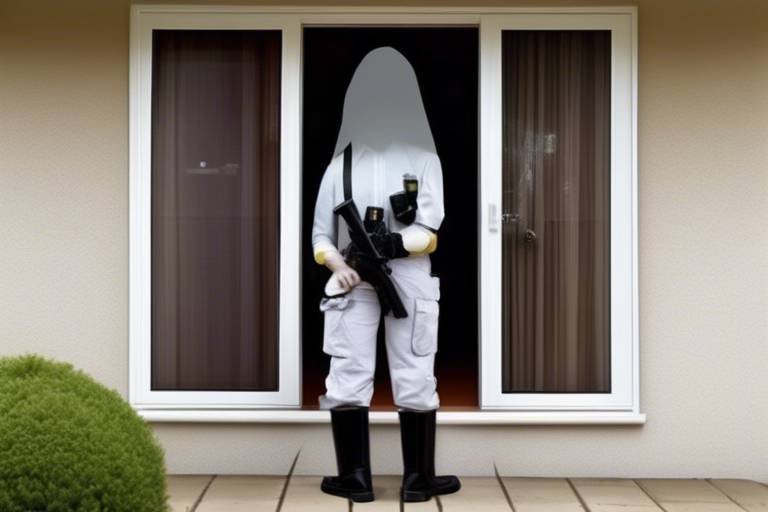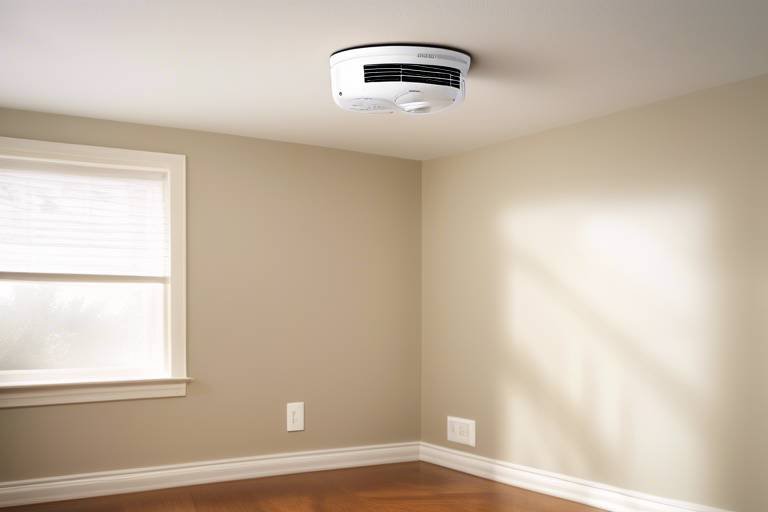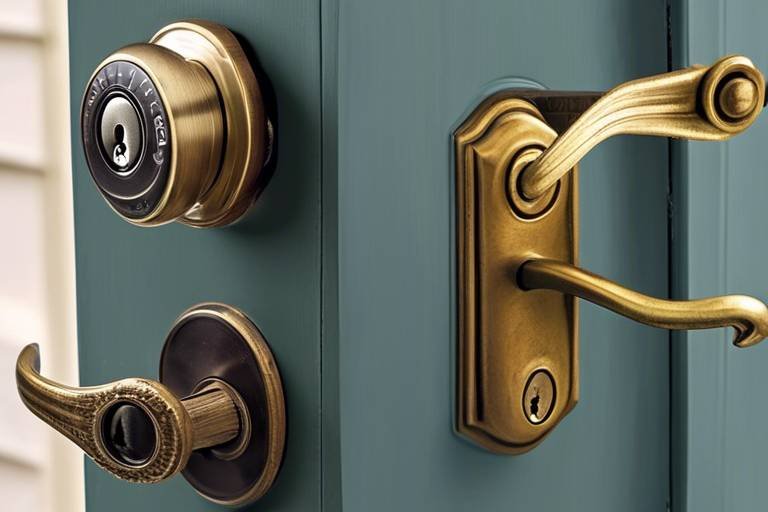Bunk Bed Safety - What Parents Should Know
Bunk beds can be a fantastic addition to a child's room, maximizing space and creating a fun sleeping arrangement. However, with this clever design comes a set of unique safety challenges that every parent should be aware of. Understanding these challenges is crucial for ensuring a secure sleeping environment for your little ones. As a parent, you want to provide a cozy and safe space for your children, but how can you achieve that with a bunk bed? In this article, we will explore the risks associated with bunk beds, how to choose the right one, installation tips, and ways to teach your children safe usage practices. So, let’s dive in and equip you with the knowledge you need to keep your kids safe while they enjoy their new sleeping adventure!
Bunk beds, while exciting, pose certain risks that can lead to accidents if not properly managed. The most common risks include falls, which can happen when children climb up or down, or even if they shift in their sleep. Additionally, improper usage, such as overcrowding the top bunk or allowing younger children to sleep on the upper level, can lead to dangerous situations. It's essential for parents to recognize these risks so they can take proactive steps to mitigate them. For instance, did you know that falls account for a significant percentage of bunk bed injuries? Understanding the potential hazards is the first step in making informed decisions about your child's sleeping arrangements.
When it comes to selecting a bunk bed, it's not just about aesthetics; safety should be your top priority. Parents should consider several factors, including the materials, design, and safety features of the bed. A sturdy construction is essential, as is an age-appropriate design that minimizes hazards for your children. For example, a bed with a solid guardrail on the top bunk can significantly reduce the risk of falls. Moreover, opting for a design that fits well in your child's room while providing adequate space for play and movement is crucial. Remember, a well-chosen bunk bed can not only save space but also enhance your child's room's overall look!
The materials used in a bunk bed can greatly affect its durability and safety. Parents should look for beds made from non-toxic finishes and robust materials that can withstand the rigors of daily use. For instance, solid wood is often preferred for its sturdiness, while metal can be a good option for its lightweight nature. However, it’s important to ensure that any metal components are free from sharp edges. When evaluating materials, consider how they will hold up over time and whether they can endure the playful antics of your children.
Both wood and metal bunk beds come with their unique advantages and disadvantages. Wood beds often provide a warm, classic look and can be more durable against wear and tear. On the other hand, metal bunk beds tend to be lighter and more affordable. However, they can sometimes feel less sturdy. Understanding these differences can help parents choose the best option for their child's needs and room aesthetics. Ultimately, the decision should be based on your child's age, weight, and the overall design of the room.
When selecting a bunk bed, it's crucial to ensure that it meets safety standards. Look for certifications from recognized organizations, as these indicate that the bed has passed rigorous testing for safety and stability. A bed that complies with safety regulations is less likely to have structural issues that could lead to accidents. Always check for labels or documentation that confirm the bed's safety credentials before making a purchase.
Adhering to age and weight recommendations is vital for bunk bed safety. Each bunk bed will come with specific guidelines regarding the maximum weight capacity for the top bunk and the recommended age for users. It's essential to follow these guidelines to ensure that your children use the bunk bed safely and appropriately. For instance, younger children may not have the coordination needed to navigate a top bunk safely, and exceeding weight limits can lead to structural failure. Always be sure to read and understand these recommendations before allowing your child to use the bunk bed.
Proper installation and regular maintenance are critical for bunk bed safety. Parents should meticulously follow manufacturer instructions during assembly to ensure that the bed is secure and stable. Additionally, conducting routine checks can help identify any wear and tear that might compromise safety. For example, it's a good practice to inspect the bed for loose screws or damaged parts every few months. By taking these precautions, you can ensure that your bunk bed remains a safe sleeping environment for your children.
Using the correct assembly techniques is crucial for the stability of the bunk bed. Parents should follow guidelines closely and utilize the appropriate tools to ensure that the bed is securely put together. If you're unsure about any part of the assembly process, don’t hesitate to seek help or consult a professional. Remember, a well-assembled bunk bed can significantly reduce the risk of accidents.
Regular safety checks are essential for maintaining the integrity of the bunk bed. Parents should inspect the bed periodically for signs of wear, such as loose screws, damaged parts, or any other issues that could compromise safety. Keeping an eye on the condition of the bed can help prevent accidents and ensure that your children continue to enjoy their sleeping arrangements without worry.
Educating children about safe usage practices is key to preventing accidents. Parents should instill rules about climbing, jumping, and sharing the bunk bed to promote a safe sleeping environment. For instance, setting clear guidelines about who can use the top bunk and how to climb safely can significantly reduce the risk of falls. Children often don’t realize the dangers associated with bunk beds, so it’s crucial to explain these risks in a way they can understand.
Establishing clear rules helps children understand safe behavior while using the bunk bed. Parents should communicate guidelines about who can use the top bunk, how to climb safely, and the importance of not roughhousing. By making these rules clear and consistent, children are more likely to follow them, creating a safer environment for everyone.
Encouraging safe play practices can prevent accidents and injuries. Parents should guide children in engaging in safe activities while using the bunk bed, minimizing risks associated with roughhousing or jumping. For example, instead of jumping off the top bunk, children can be encouraged to use the ladder properly. By fostering an environment of safe play, parents can help children enjoy their bunk beds without the associated risks.
1. What age is appropriate for a child to sleep in a top bunk?
Most manufacturers recommend that children under the age of six should not sleep in the top bunk due to the risk of falls.
2. How can I prevent my child from falling out of the top bunk?
Installing guardrails on both sides of the top bunk can significantly reduce the risk of falls. Additionally, teaching children safe climbing techniques is essential.
3. Are metal bunk beds safer than wooden ones?
Both metal and wooden bunk beds can be safe if they meet safety standards and are properly maintained. The choice often comes down to personal preference and room aesthetics.
4. How often should I check the bunk bed for safety?
It's a good idea to inspect the bunk bed every few months for loose screws, damaged parts, or any signs of wear and tear.
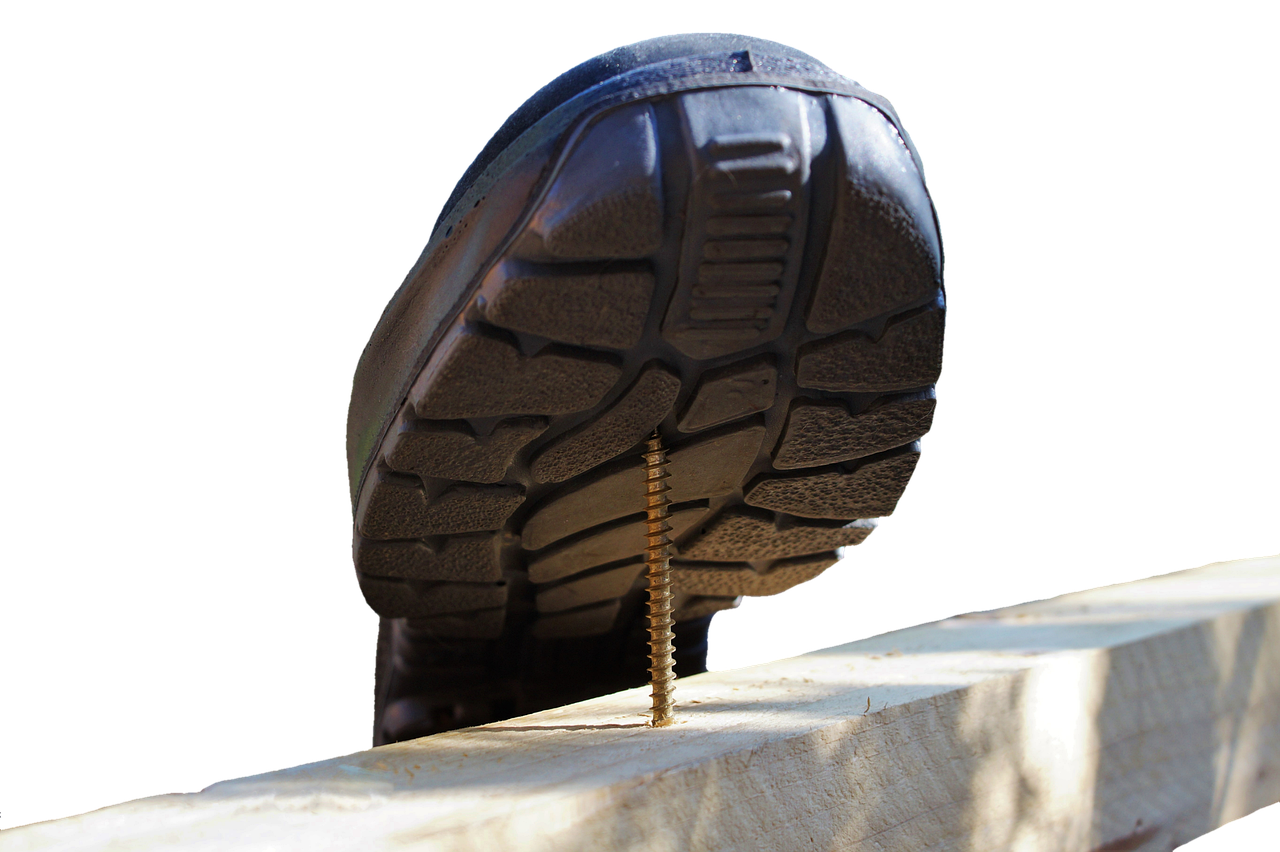
Understanding Bunk Bed Risks
This article provides essential information on bunk bed safety, highlighting risks, preventive measures, and guidelines to ensure a secure sleeping environment for children in shared spaces.
Bunk beds can be a fantastic space-saving solution for families, especially in shared bedrooms. However, they come with their unique set of risks that every parent should be aware of. One of the most significant dangers associated with bunk beds is the risk of falls. Children may accidentally roll out of bed or climb recklessly, leading to potential injuries. It's essential to understand that the height of the top bunk can pose a serious threat, especially for younger children who might not have the coordination to navigate the ladder safely.
Another risk involves improper usage of the bunk bed. Kids are naturally curious and may try to use the bunk bed in ways that it wasn't designed for, like jumping off the top or using it as a trampoline. These behaviors can lead to injuries that could have been easily prevented. Additionally, overcrowding the bunk bed with multiple children or allowing them to play rough can escalate the danger, turning a fun sleeping arrangement into a hazardous situation.
To truly grasp the risks, consider the following factors:
- Age of the Child: Younger children are more prone to accidents, as they may not understand the dangers associated with heights.
- Weight Limit: Each bunk bed has a specified weight limit. Exceeding this limit can compromise the bed's structural integrity.
- Design Flaws: Some bunk beds may lack essential safety features, such as guardrails or sturdy ladders, increasing the risk of accidents.
It's crucial for parents to have open conversations with their children about the risks associated with bunk beds. Teaching kids about safe climbing practices and the importance of not jumping from the top bunk can significantly reduce the likelihood of accidents. Remember, creating a safe sleeping environment is a shared responsibility between parents and children.
Selecting a safe bunk bed involves considering materials, design, and safety features. Parents should prioritize sturdy construction and age-appropriate designs to minimize hazards for their children.
The choice of materials affects durability and safety. Parents should look for non-toxic finishes and robust materials that can withstand the rigors of daily use while ensuring child safety.
Both wood and metal bunk beds have pros and cons. Understanding these differences helps parents choose the best option for their child's needs and room aesthetics.
Bunk beds should meet safety standards. Parents should look for certifications from recognized organizations to ensure the bed has passed rigorous testing for safety and stability.
Age and weight guidelines are vital for bunk bed safety. Parents must adhere to these recommendations to ensure that their children use the bunk bed safely and appropriately.
Proper installation and regular maintenance are essential for bunk bed safety. Parents should follow manufacturer instructions carefully and conduct routine checks to ensure structural integrity.
Using the correct assembly techniques is crucial for stability. Parents should follow guidelines and use appropriate tools to ensure that the bunk bed is securely put together.
Regular safety checks help identify wear and tear. Parents should inspect the bunk bed periodically for loose screws, damaged parts, or other issues that could compromise safety.
Educating children about safe usage practices is key to preventing accidents. Parents should instill rules about climbing, jumping, and sharing the bunk bed to promote a safe sleeping environment.
Establishing clear rules helps children understand safe behavior. Parents should communicate guidelines about who can use the top bunk and how to climb safely.
Safe play practices prevent accidents. Parents should encourage children to engage in safe activities while using the bunk bed, minimizing risks associated with roughhousing or jumping.
Q: What age is appropriate for a child to sleep on the top bunk?
A: It is generally recommended that children under the age of 6 should not sleep on the top bunk due to the risk of falls.
Q: How can I make a bunk bed safer?
A: Ensure that the bunk bed has guardrails on the top bunk, follow weight limits, and regularly check for loose screws or damage.
Q: Are there specific safety certifications I should look for?
A: Look for certifications from organizations like the American Society for Testing and Materials (ASTM) or the Consumer Product Safety Commission (CPSC).

Choosing the Right Bunk Bed
When it comes to choosing the right bunk bed for your little ones, there’s a lot more to consider than just the fun factor. Sure, bunk beds can transform a shared bedroom into a cozy adventure zone, but safety should always come first. Parents need to navigate through a maze of options, ensuring they select a bed that not only looks great but also provides a secure sleeping environment. The first step is to evaluate the materials used in the construction of the bunk bed. Opting for high-quality materials can make a significant difference in durability and safety. Look for beds made from solid wood or sturdy metal, as these materials are less likely to warp or break over time.
Next, consider the design of the bunk bed. Some designs might look appealing but could have hidden hazards. For example, beds with sharp edges or complex ladders can pose risks for children. Instead, choose designs that have rounded edges and easy-to-navigate ladders. Additionally, make sure the bed is equipped with safety features like guardrails on the top bunk to prevent falls. These are crucial, especially for younger children who may not yet have developed a strong sense of balance.
Another essential aspect is to check for safety certifications. Look for bunk beds that meet safety standards set by recognized organizations. These certifications ensure that the bed has undergone rigorous testing for stability and safety. You wouldn't want to buy a bunk bed that hasn't been properly evaluated, right? A well-certified bunk bed gives you peace of mind knowing that it has been designed with your child's safety in mind.
It’s also important to consider the age and weight recommendations provided by the manufacturer. Each bunk bed will have specific guidelines indicating the appropriate age range and weight limits for the top and bottom bunks. Adhering to these recommendations is vital for preventing accidents. For instance, allowing younger children to sleep on the top bunk can be risky, as they may not yet have the coordination to navigate the ladder safely. Always prioritize safety over aesthetics when it comes to your child's sleeping arrangements.
Ultimately, selecting the right bunk bed is about finding a balance between fun and safety. It’s essential to involve your children in the decision-making process, allowing them to express their preferences while guiding them toward safe choices. Remember, a well-chosen bunk bed can provide years of enjoyment and create cherished memories, so take your time and make an informed decision!
- What is the safest age for a child to sleep in a top bunk? Generally, children aged 6 and older are considered safe for the top bunk, as they have better coordination and understanding of safety.
- How often should I check the bunk bed for safety? It's advisable to conduct routine safety checks every few months to ensure that all parts are secure and in good condition.
- Can I use a bunk bed for adults? Some bunk beds are designed for adults, but it's crucial to check the weight limits and safety certifications before use.
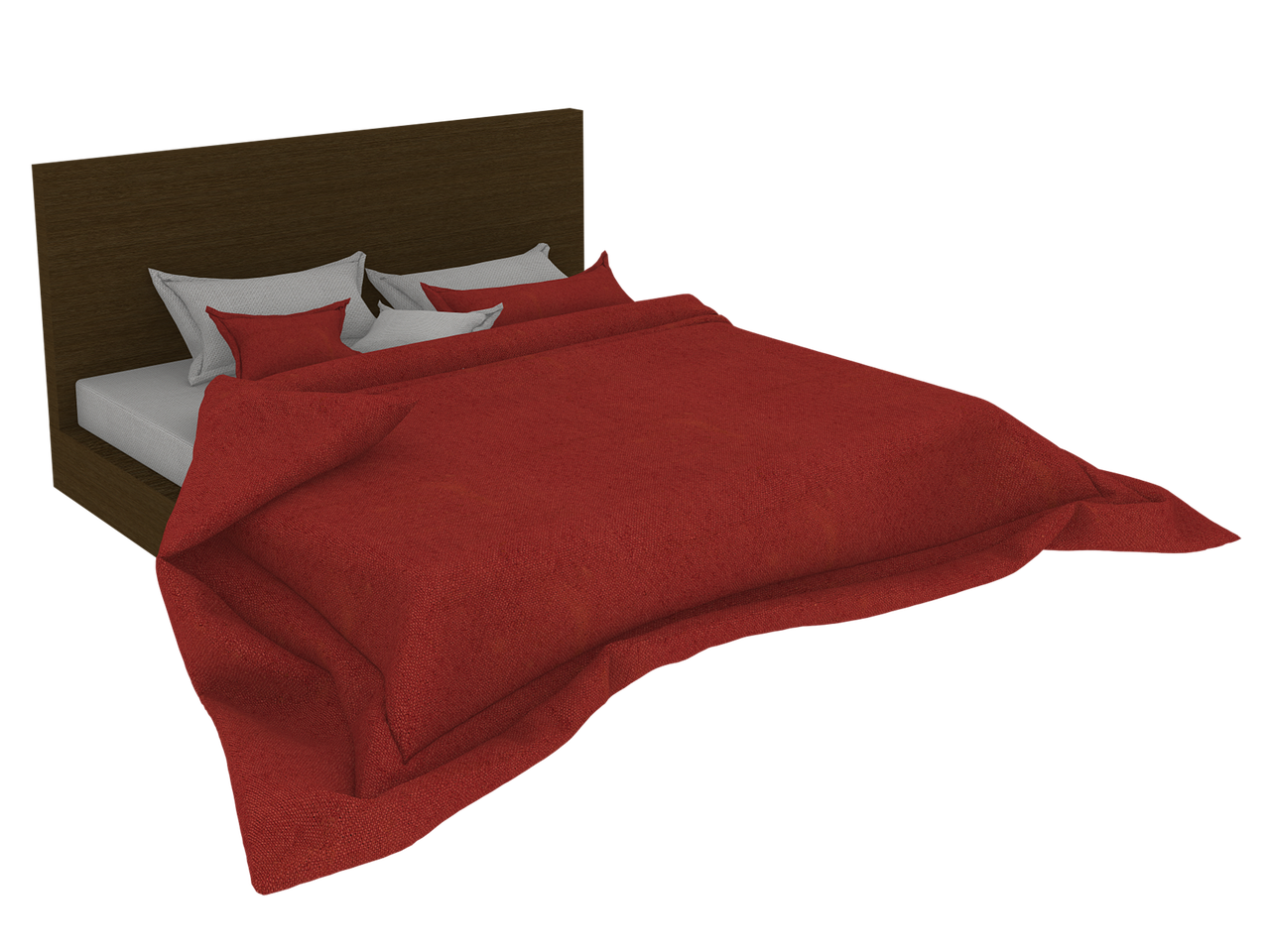
Material Considerations
When it comes to bunk beds, the choice of materials is not just about aesthetics; it plays a crucial role in durability and safety. Parents should be vigilant about the materials used in the construction of these beds, as they can significantly affect how well the bed holds up over time and how safe it is for children. For instance, solid wood is often viewed as a more reliable option compared to particleboard or cheaper composites, which may not withstand the wear and tear of energetic children. Solid wood bunk beds provide a sturdy frame that can endure jumping, climbing, and other activities that kids often engage in.
Moreover, the finishes used on the bunk bed are equally important. It's essential to select beds that use non-toxic finishes to prevent any harmful chemicals from leaching into the air or coming into contact with your child’s skin. Some materials, like certain types of metal, might be prone to rust if not properly coated, while untreated wood can splinter, posing a risk to little hands and feet. Therefore, when shopping for a bunk bed, always look for beds that are labeled as low-VOC (Volatile Organic Compounds) or eco-friendly. This ensures that the bed is not only safe for your child but also better for the environment.
Another consideration is the weight capacity of the materials. Each bunk bed will have a specified weight limit, and it's vital to adhere to these guidelines. Exceeding the weight limit can compromise the structural integrity of the bed, leading to potential accidents. Here’s a quick overview of the typical weight capacities based on material:
| Material Type | Typical Weight Capacity |
|---|---|
| Solid Wood | Up to 400 lbs |
| Metal | Up to 350 lbs |
| Particleboard | Up to 200 lbs |
In summary, when considering materials for a bunk bed, it's essential to prioritize sturdiness, safety, and non-toxic finishes. This not only ensures that the bed will last through the ups and downs of childhood but also keeps your little ones safe while they sleep and play. Always remember, investing in a quality bunk bed made from the right materials is an investment in your child's safety and well-being.
- What is the safest material for a bunk bed? Solid wood is generally considered the safest material due to its durability and strength.
- Are metal bunk beds safe? Yes, but it's important to check for rust and ensure they have a sturdy design.
- How can I ensure the bunk bed is safe for my child? Look for non-toxic materials, check weight limits, and follow installation instructions carefully.
- What age is appropriate for a child to use a top bunk? Typically, children over the age of 6 are considered safe to use the top bunk.
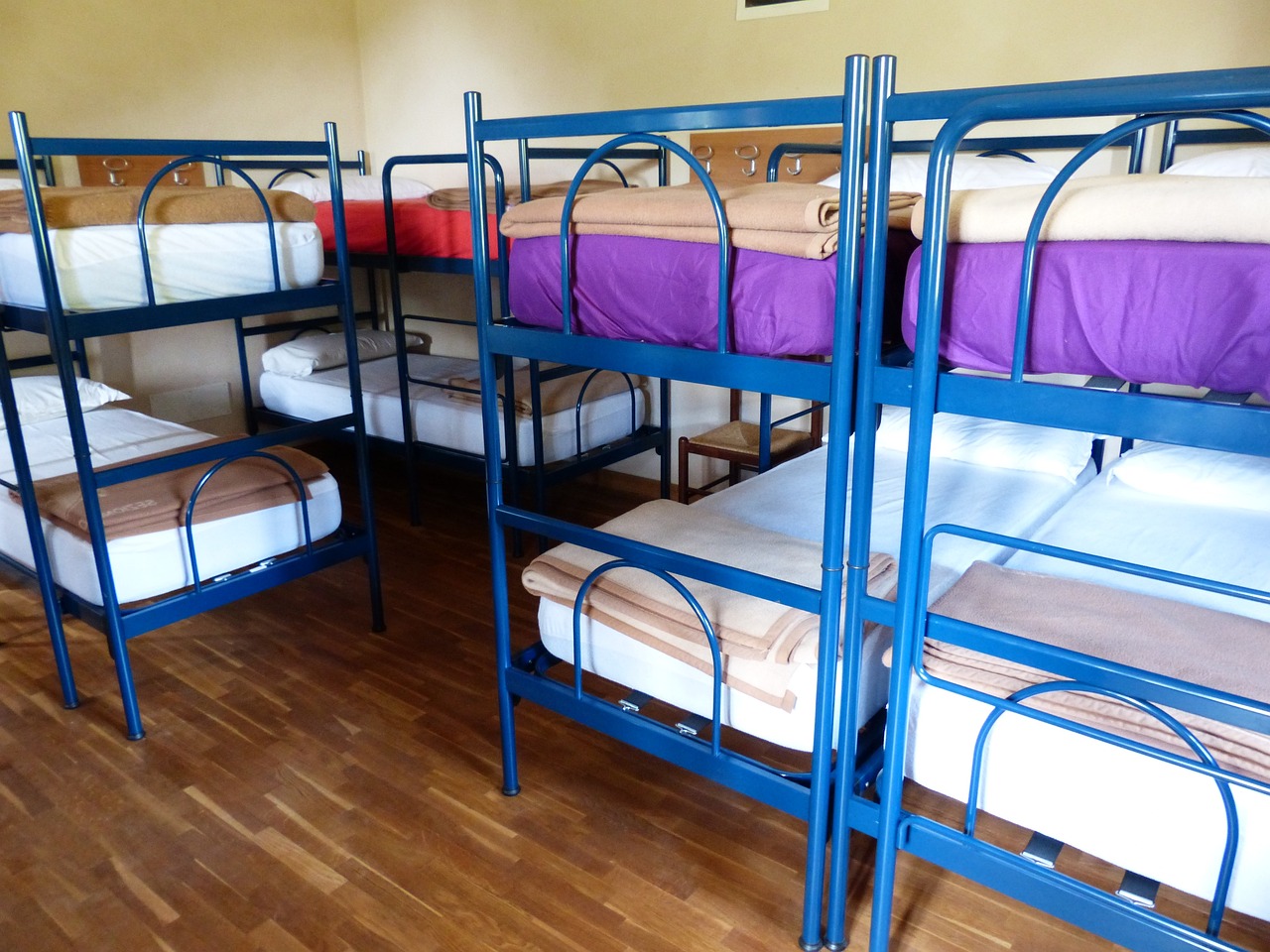
Wood vs. Metal Bunk Beds
When it comes to choosing the right bunk bed for your child, one of the most significant decisions you'll face is whether to go for a wooden or metal frame. Each option comes with its own set of advantages and disadvantages that can impact safety, aesthetics, and durability. Understanding these differences can help you make an informed choice that suits your family's needs.
Wooden bunk beds are often favored for their classic look and sturdy construction. They can add a warm, cozy feel to a child's room, making it feel more inviting. Plus, wood is typically more resilient to scratches and dents, which is a huge plus when you have active kids. However, they can be heavier and may require more maintenance over time, especially if the wood isn't treated properly. It's also worth noting that wooden beds can be susceptible to warping if exposed to moisture.
On the other hand, metal bunk beds are known for their sleek, modern design and lightweight structure. They often come in various colors and styles, which can be appealing for children who want a trendy look in their rooms. Metal frames are usually easier to assemble and disassemble, which is a bonus for families that move frequently or want to change the layout of the room. However, metal beds can be prone to scratches and may not provide the same warmth as wood. Additionally, if not designed well, they may squeak or wobble, which could be concerning for parents.
| Feature | Wooden Bunk Beds | Metal Bunk Beds |
|---|---|---|
| Durability | Highly durable but can warp | Durable but may scratch easily |
| Weight | Heavier, harder to move | Lighter, easier to move |
| Maintenance | Requires regular maintenance | Low maintenance |
| Design | Classic and warm | Modern and sleek |
Ultimately, the choice between wood and metal bunk beds boils down to your personal preference, your child's taste, and how you plan to use the bed. If you’re looking for something that blends seamlessly with a more traditional decor, a wooden bunk bed might be the way to go. However, if you prefer a contemporary look or need something more practical for frequent moves, a metal bunk bed could be the perfect fit. Whichever you choose, ensure it meets safety standards and fits the specific needs of your family.
- What is the weight limit for bunk beds? Most bunk beds have a weight limit between 200 to 400 pounds, depending on the model and materials used.
- Are bunk beds safe for younger children? Generally, bunk beds are recommended for children aged 6 and older due to the risk of falls.
- How can I ensure my bunk bed is safe? Regularly check for loose screws, ensure proper assembly, and teach your children safe usage practices.
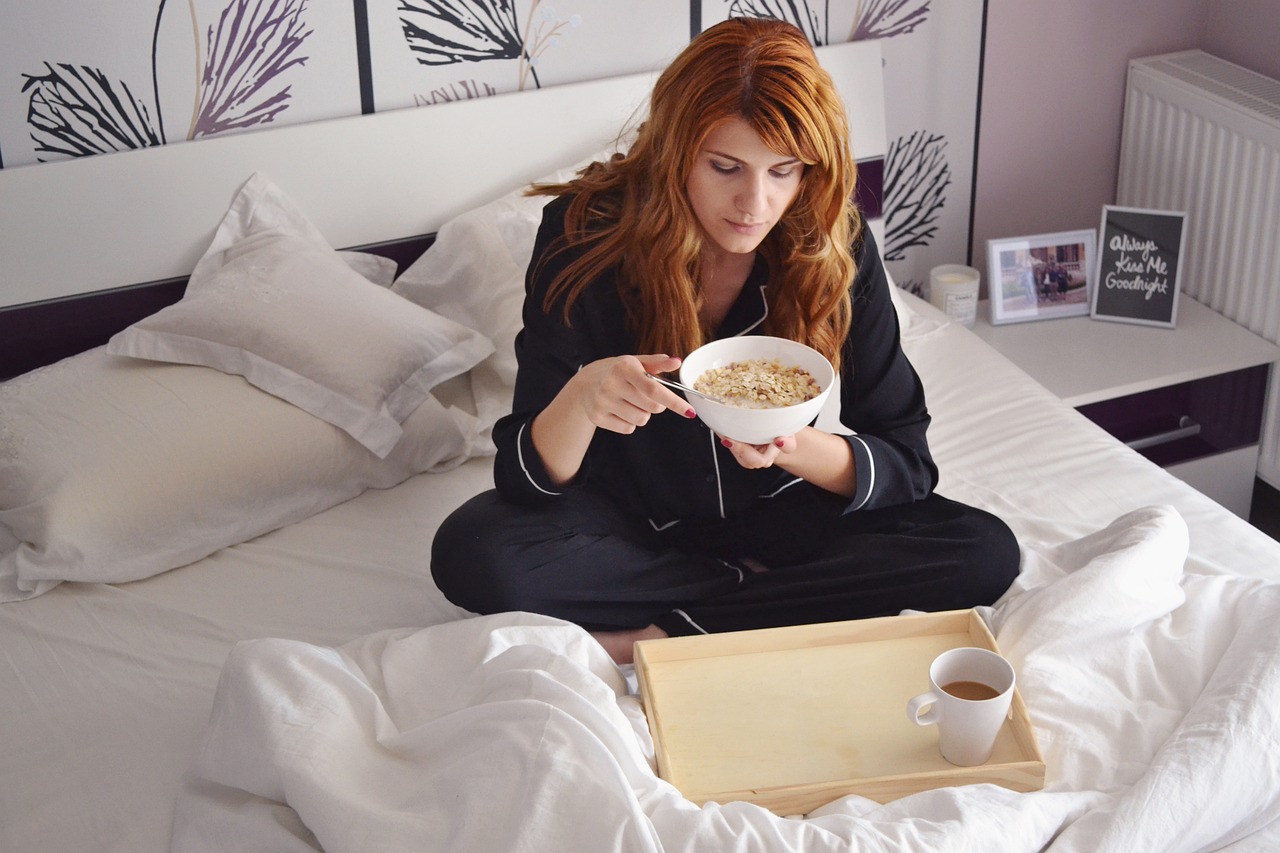
Safety Certifications
When it comes to ensuring the safety of your child’s bunk bed, certifications play a crucial role. These certifications are not just fancy stickers; they represent a promise that the bunk bed meets stringent safety standards set by recognized organizations. As a parent, it’s your responsibility to look for these certifications to guarantee that the bed has undergone rigorous testing for stability, strength, and safety.
For instance, the American Society for Testing and Materials (ASTM) and the Consumer Product Safety Commission (CPSC) are two key organizations that establish safety guidelines for bunk beds. When you see a bunk bed that proudly displays these certifications, you can breathe a little easier knowing that it has been tested for things like weight limits and structural integrity. This is especially important because bunk beds can be a bit of a wild ride for kids, with all that climbing and jumping involved!
Here’s a quick overview of what to look for:
| Certification | Description |
|---|---|
| ASTM | Ensures that the bunk bed meets safety standards for strength and stability. |
| CPSC | Regulates safety standards for consumer products, including bunk beds. |
| ISO | International standards that ensure quality and safety for various products. |
Additionally, you should also consider the materials used in the bunk bed. Non-toxic finishes and sturdy construction materials are essential for your child's health and safety. A bunk bed that is certified safe not only protects your child from potential hazards but also gives you peace of mind. Remember, safety certifications are your best friends in the world of bunk beds!
- What should I look for in a safety certification? Always check for certifications from reputable organizations like ASTM and CPSC.
- Are all bunk beds safe? Not all bunk beds are created equal; always verify safety certifications before purchasing.
- How often should I check the bunk bed for safety? Regular checks should be done at least once a month to ensure everything is in good condition.
- Can I use a bunk bed for younger children? Always adhere to age recommendations and ensure that the top bunk is suitable for your child's age and weight.

Age and Weight Recommendations
When it comes to bunk bed safety, understanding the age and weight recommendations is absolutely crucial. These guidelines are not just arbitrary numbers; they are designed to ensure that your child has a safe and secure sleeping environment. Most manufacturers provide specific age and weight limits for their bunk beds, and it's essential for parents to adhere to these recommendations to minimize the risk of accidents.
Typically, the top bunk is recommended for children aged six years and older. This is primarily because younger children may not have the physical coordination and judgment required to safely navigate the height of a bunk bed. Imagine a toddler trying to climb a ladder—that's a recipe for disaster! On the other hand, the bottom bunk is generally considered safe for younger children, as it is closer to the ground and poses less risk of injury from falls.
As for weight limits, most bunk beds can accommodate a weight range between 150 to 200 pounds on the top bunk. However, this can vary based on the construction and materials used. For instance, a sturdy wooden bunk bed may support more weight than a metal one. Therefore, it’s essential to check the manufacturer's specifications to ensure that the bed can safely support your child’s weight, especially as they grow. Here’s a quick breakdown:
| Age Group | Recommended Bunk | Weight Limit |
|---|---|---|
| Under 6 years | Bottom Bunk Only | 150 lbs |
| 6 years and older | Top and Bottom Bunk | 150-200 lbs |
Additionally, it's important to regularly assess your child's growth and weight to ensure they continue to meet the safety criteria. As your child grows, they may reach the weight limit before they reach the age recommendation, which could necessitate a transition to a different sleeping arrangement. Always keep an eye on their growth patterns; after all, safety should never be compromised!
Ultimately, adhering to these age and weight recommendations is a proactive step towards ensuring a safe sleeping environment for your children. By being informed and vigilant, you can help prevent accidents and create a cozy, secure space for your little ones to dream safely.
- What age is safe for a child to sleep in the top bunk? Generally, children should be at least 6 years old to sleep in the top bunk.
- What should I do if my child exceeds the weight limit? If your child exceeds the weight limit, it's best to transition them to a different sleeping arrangement to ensure their safety.
- Can I use a bunk bed for younger children? Yes, but only for the bottom bunk, as it is safer for younger children.
- How often should I check the bunk bed for safety? It's recommended to perform routine checks every few months to ensure everything is secure and in good condition.
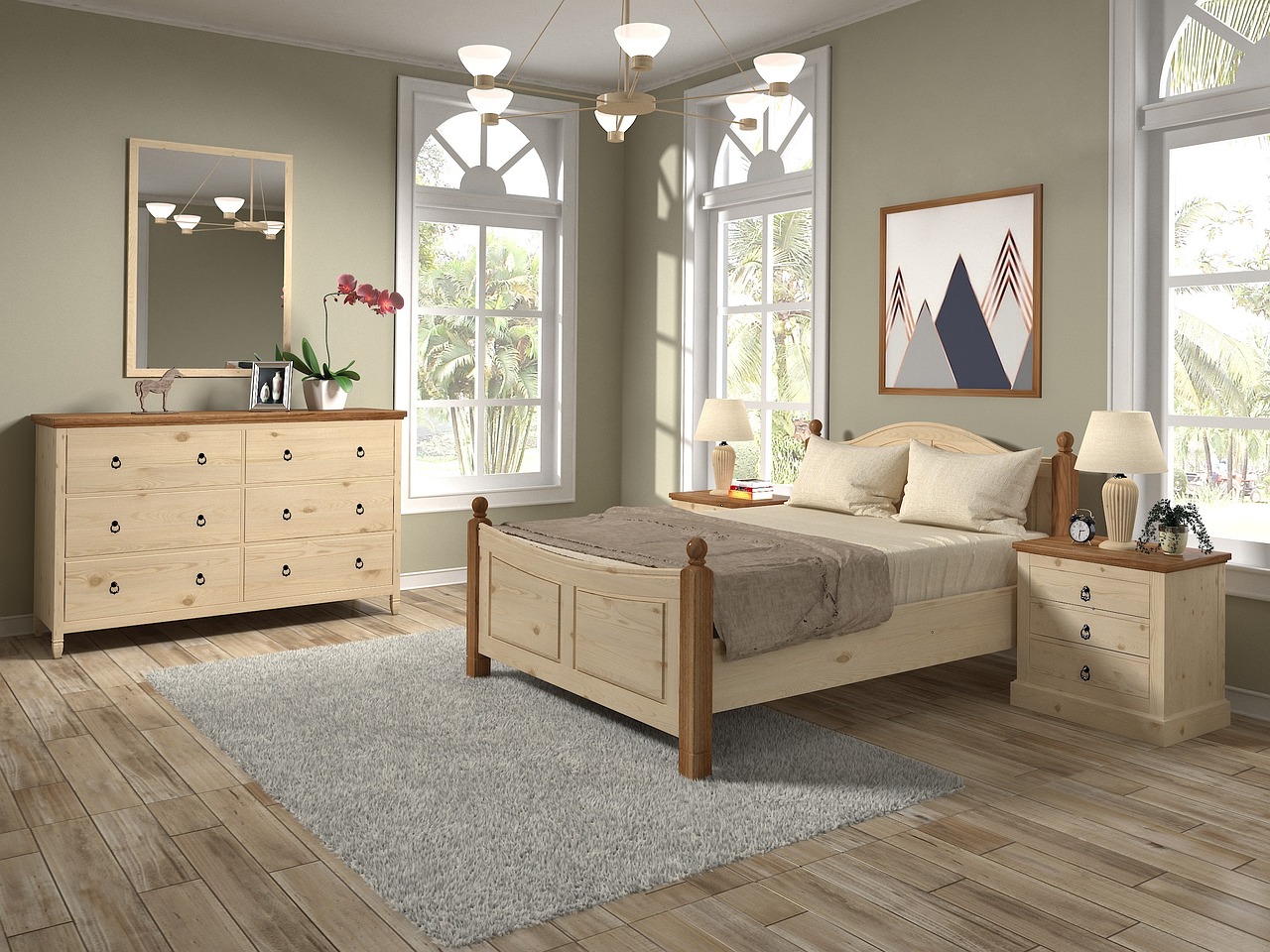
Installation and Maintenance Tips
When it comes to ensuring the safety of your children's bunk bed, proper installation and regular maintenance are absolutely crucial. Think of it like building a solid foundation for a house; without it, everything else is at risk. To start, always follow the manufacturer's instructions meticulously. Each bunk bed design has its own unique assembly requirements, and skipping steps could lead to instability. Make sure to use the right tools, as they can significantly affect the outcome. A simple screwdriver might seem harmless, but using the wrong type can strip screws, leading to a dangerous situation.
After the initial setup, it's important to conduct routine maintenance checks. Just like you wouldn't ignore a strange noise from your car, you shouldn't overlook any signs of wear and tear on the bunk bed. Regularly inspect the bed for loose screws, broken slats, or any signs of damage. If you notice any issues, address them immediately. A quick fix today can prevent a serious accident tomorrow. For example, if a slat is cracked, it could give way under the weight of a child, leading to a dangerous fall.
To help you keep track of what to check during your maintenance routine, here’s a simple checklist:
- Inspect all screws and bolts for tightness.
- Check for any cracks or damage in the wood or metal.
- Ensure the ladder is secure and free from defects.
- Look for any sharp edges or protruding parts that could cause injury.
Additionally, consider the location of the bunk bed. Ensure it is placed away from windows or any other hazards that could pose a risk. If your child is prone to climbing or jumping, you might want to place a soft rug or mat underneath to cushion any potential falls. Remember, a little extra precaution can go a long way in creating a safe sleeping environment.
Lastly, educate your children about the importance of maintaining the bunk bed. Encourage them to report any issues they notice, fostering a sense of responsibility and awareness. After all, it's not just about having fun; it's about keeping everyone safe while they do! With these installation and maintenance tips, you can help ensure that your child's bunk bed remains a safe and enjoyable place for years to come.
| Question | Answer |
|---|---|
| How often should I check the bunk bed for safety? | It's recommended to conduct safety checks at least once a month, or more frequently if your children are very active. |
| What should I do if I find a loose screw? | Tighten it immediately with the appropriate tool. If the screw is damaged, replace it with a new one to ensure stability. |
| Can I customize my bunk bed? | While customization is possible, ensure that any modifications do not compromise the bed's structural integrity or safety. |
| Are there specific weight limits for bunk beds? | Yes, always refer to the manufacturer's guidelines for weight limits to ensure safe usage. |
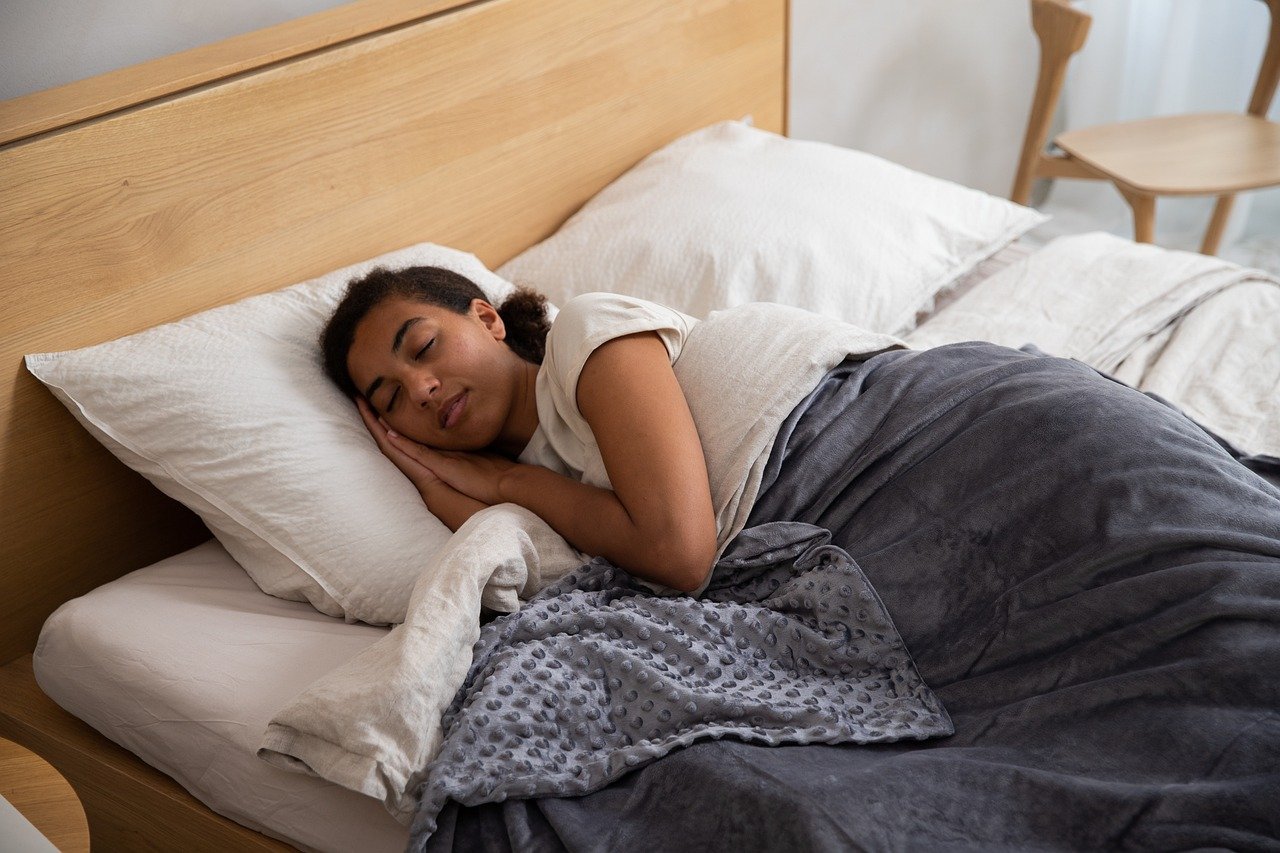
Secure Assembly Techniques
When it comes to ensuring the safety of your children while using a bunk bed, play a pivotal role. The assembly process is not just about putting pieces together; it’s about creating a stable and safe environment for your little ones to sleep and play. To start, always refer to the manufacturer’s instructions. These guidelines are designed specifically for the model you have purchased and provide essential information on how to properly assemble the bunk bed.
One of the first steps in the assembly process is to lay out all the components on a flat surface. This will give you a clear view of all the parts and help you avoid any missing pieces. As you begin assembling, it’s crucial to use the right tools. Typically, you’ll need a screwdriver, a wrench, and sometimes a hammer. Using the correct tools not only makes the job easier but also ensures that each part is tightened properly, reducing the risk of future accidents.
While assembling, pay special attention to the connections between the bed frames and the ladder. These areas are prone to stress and require extra care. Ensure that all screws and bolts are tightened securely. A good tip is to double-check each connection after the assembly is complete. This step can save you from potential issues down the line. If the bunk bed has a guardrail, make sure it is installed correctly and is high enough to prevent falls from the top bunk. The guardrail should extend at least 5 inches above the mattress to provide adequate protection.
Another important aspect to consider is the placement of the bunk bed itself. Make sure it is positioned away from windows, ceiling fans, or any other objects that could pose a hazard. Additionally, the bunk bed should be placed on a flat, sturdy surface to prevent wobbling, which can lead to instability. If your bunk bed includes a trundle or additional storage, ensure that these components are also assembled with the same level of care and attention to detail.
Finally, once the bunk bed is assembled, conduct a thorough inspection. Check for any sharp edges, loose screws, or potential pinch points. It’s a good idea to have a trusted friend or family member assist you in this process, as a second set of eyes can often catch things you might miss. Remember, the goal is to create a safe sleeping environment where your children can enjoy their bunk bed without worry!
- What are the most common safety issues with bunk beds?
Common safety issues include falls, improper use of the top bunk, and structural instability due to poor assembly. - How often should I check the bunk bed for safety?
It's advisable to conduct routine safety checks every few months or whenever you notice unusual creaking or wobbling. - Can adults use bunk beds safely?
While some bunk beds are designed to support adult weight, it’s essential to check the manufacturer's guidelines regarding weight limits. - What should I do if I find a loose screw or damaged part?
Immediately address any loose screws or damaged parts by tightening them or replacing them to ensure safety.

Routine Safety Checks
When it comes to ensuring the safety of your children's bunk bed, conducting is not just a good idea—it's a necessity! Imagine a well-oiled machine; if one cog is loose, the entire system can falter. Similarly, a bunk bed requires regular inspections to maintain its stability and safety. Parents should make it a habit to check the bunk bed at least once a month, looking for any signs of wear and tear that could pose a risk to their children.
During these safety checks, there are several key areas to focus on. First and foremost, inspect all the screws and bolts. Over time, the constant movement and usage can cause them to loosen. A simple twist with a screwdriver can often tighten them back up, but if you notice any missing screws, replace them immediately. It’s also essential to check the bed's ladder for stability. Ensure it is securely attached and that the rungs are not cracked or damaged, as this could lead to falls.
Another crucial aspect of routine checks is examining the bed frame itself. Look for any cracks or splinters in the wood or any bends in the metal. If you spot any issues, it may be time to consider repairs or even a replacement. The mattress should also be assessed; it should fit snugly within the bed frame to prevent gaps that could catch a child's foot or head. A mattress that is too small can create a dangerous situation.
To help parents keep track of these checks, consider creating a simple checklist that can be printed and hung near the bunk bed. This checklist could include:
- Check all screws and bolts for tightness
- Inspect the ladder for stability
- Examine the bed frame for cracks or damage
- Ensure the mattress fits snugly
- Look for any signs of wear on the guardrails
By incorporating these routine safety checks into your monthly schedule, you can significantly reduce the risk of accidents and ensure that your bunk bed remains a safe haven for your children. Remember, a little vigilance goes a long way in creating a secure sleeping environment!
Q: How often should I conduct safety checks on a bunk bed?
A: It’s recommended to check your bunk bed at least once a month to ensure all components are secure and in good condition.
Q: What should I do if I find a loose screw or damaged part?
A: Tighten loose screws immediately. If you find any damaged parts, consider replacing them or consulting a professional for repairs.
Q: Are there any specific signs I should look for during a safety check?
A: Yes! Look for loose screws, cracks in the wood or metal, instability in the ladder, and ensure the mattress fits properly.
Q: Can I use a bunk bed for children of different ages?
A: Yes, but make sure to follow the manufacturer's age and weight recommendations to ensure safety for all users.

Teaching Safe Usage Practices
When it comes to bunk beds, teaching safe usage practices is not just a good idea; it's essential for preventing accidents and ensuring that your kids can enjoy their sleeping arrangements without worry. Children are naturally curious and energetic, which means they might not always think about safety when climbing up or down from the top bunk. So, how can parents effectively instill these important safety habits? It starts with open communication and establishing clear rules.
First and foremost, parents should have a candid conversation with their children about the potential dangers of bunk beds. It's vital to explain that while bunk beds can be a lot of fun, they also come with responsibilities. You might say something like, "The top bunk is like a high-up treehouse; it's cool to be up there, but we need to be careful to avoid falling." This analogy helps kids understand that while the top bunk is exciting, it requires caution.
Next, setting specific rules for using the bunk bed can be incredibly beneficial. For instance, you might establish guidelines such as:
- No jumping or roughhousing on the top bunk.
- Only one person at a time on the top bunk.
- Always use the ladder to get up and down.
By laying down these ground rules, children will have a clear understanding of what is acceptable behavior. Moreover, it’s crucial to remind them that the top bunk is meant for sleeping, not for playing or wrestling. Consider making a colorful poster of these rules and hanging it near the bunk bed as a visual reminder.
Another effective strategy is to encourage safe play practices. Kids often turn their sleeping areas into playgrounds, which can lead to accidents. Parents can guide their children by suggesting safe activities that can be done around the bunk bed, such as reading, drawing, or telling stories, while discouraging any rough play. You might say, "Let’s save the jumping for the trampoline outside and enjoy our time up here with a fun story instead!"
Additionally, demonstrating safe usage can be a powerful teaching tool. Show your children how to climb up and down the ladder safely. Use phrases like, "Always face the ladder," and "Hold on with both hands." Kids often learn best by watching, so take the time to model these behaviors yourself. Remember, practice makes perfect, and the more they use the ladder correctly, the more it will become second nature to them.
Finally, regular check-ins about the bunk bed can reinforce these safety practices. Ask your children how they feel about using the bunk bed and if they have any concerns. This not only opens the door for communication but also empowers them to take ownership of their safety. Kids who feel involved in the process are more likely to adhere to the rules you've set.
Q: What age is appropriate for a child to sleep on the top bunk?
A: Generally, children aged 6 and older are considered safe to sleep on the top bunk, as they are usually able to understand and follow safety rules.
Q: How can I make the top bunk safer for younger children?
A: Consider using guardrails on the top bunk and placing soft mats on the floor beneath the bunk bed to cushion any potential falls.
Q: What should I do if my child refuses to follow the safety rules?
A: If your child is not following the rules, it may be necessary to restrict their access to the top bunk until they can demonstrate safe behavior consistently.
Q: Are there any specific safety certifications I should look for when purchasing a bunk bed?
A: Yes! Look for certifications from organizations such as the Consumer Product Safety Commission (CPSC) or the American Society for Testing and Materials (ASTM) to ensure the bunk bed meets safety standards.
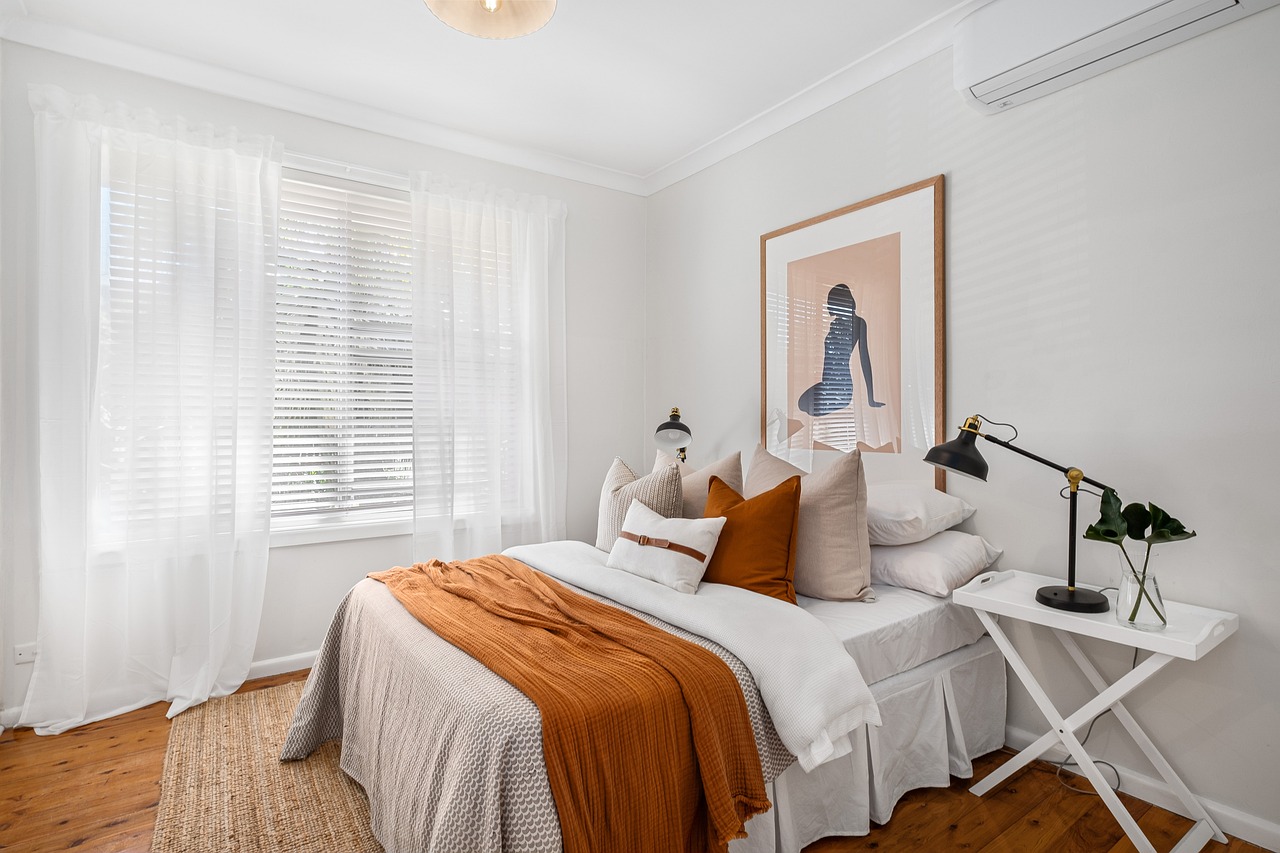
Setting Rules for Bunk Bed Use
Establishing clear and concise rules for bunk bed use is essential to ensure that your children enjoy their sleeping arrangements safely. Think of these rules as the safety net that prevents falls and accidents while allowing your kids to enjoy their space. First and foremost, it's important to designate who gets to sleep on the top bunk. Typically, children under the age of six should avoid the upper bunk altogether, as they may not yet have the physical coordination to navigate the height safely. Discussing this with your children can help them understand why it's important to follow these guidelines.
In addition to age restrictions, you should also set rules regarding how to climb up and down. Encourage your children to use the ladder instead of attempting to jump or climb the side rails. This may seem like common sense, but in the heat of play, kids often forget the basics. Reinforcing the idea that the ladder is the only safe way to access the top bunk can prevent many accidents.
Another aspect of bunk bed safety is to create a 'no roughhousing' rule. Kids are naturally playful, and it's easy for them to get carried away while jumping around or playing games on the bunk bed. Explain to them that while it’s okay to have fun, rough play can lead to falls or injuries. Instead, encourage them to engage in quieter activities like reading or playing board games while on the bunk bed. This not only fosters a safer environment but also promotes creative and calm play.
Lastly, consider implementing a 'quiet time' rule during nighttime hours. This can help establish a routine that keeps everyone safe and ensures that kids are ready to sleep when it's time. You might even create a fun bedtime ritual that includes reading a story or talking about the day, which can help signal that it's time to wind down. By setting these rules, you’re not just ensuring safety; you’re also creating a structured environment where your children can thrive.
Remember, the goal is to make the bunk bed a fun and safe space for your children. Regularly revisiting these rules and discussing their importance will help reinforce safe practices. After all, safety is a shared responsibility, and when everyone understands their role, the bunk bed can be a cozy haven for sleepovers and adventures!
- What age is appropriate for sleeping on the top bunk? Generally, children aged 6 and older are recommended for the top bunk due to their physical coordination and understanding of safety rules.
- How can I ensure my bunk bed is safe? Regularly check for loose screws, follow assembly instructions carefully, and ensure that the bed meets safety standards.
- Can I use a bunk bed for younger children? It’s best to avoid letting children under six sleep on the top bunk. Instead, consider using the bottom bunk for younger kids.
- What should I do if my child is afraid of sleeping on the top bunk? Encourage them by using positive reinforcement, and consider letting them decorate their space to make it feel more personal and safe.
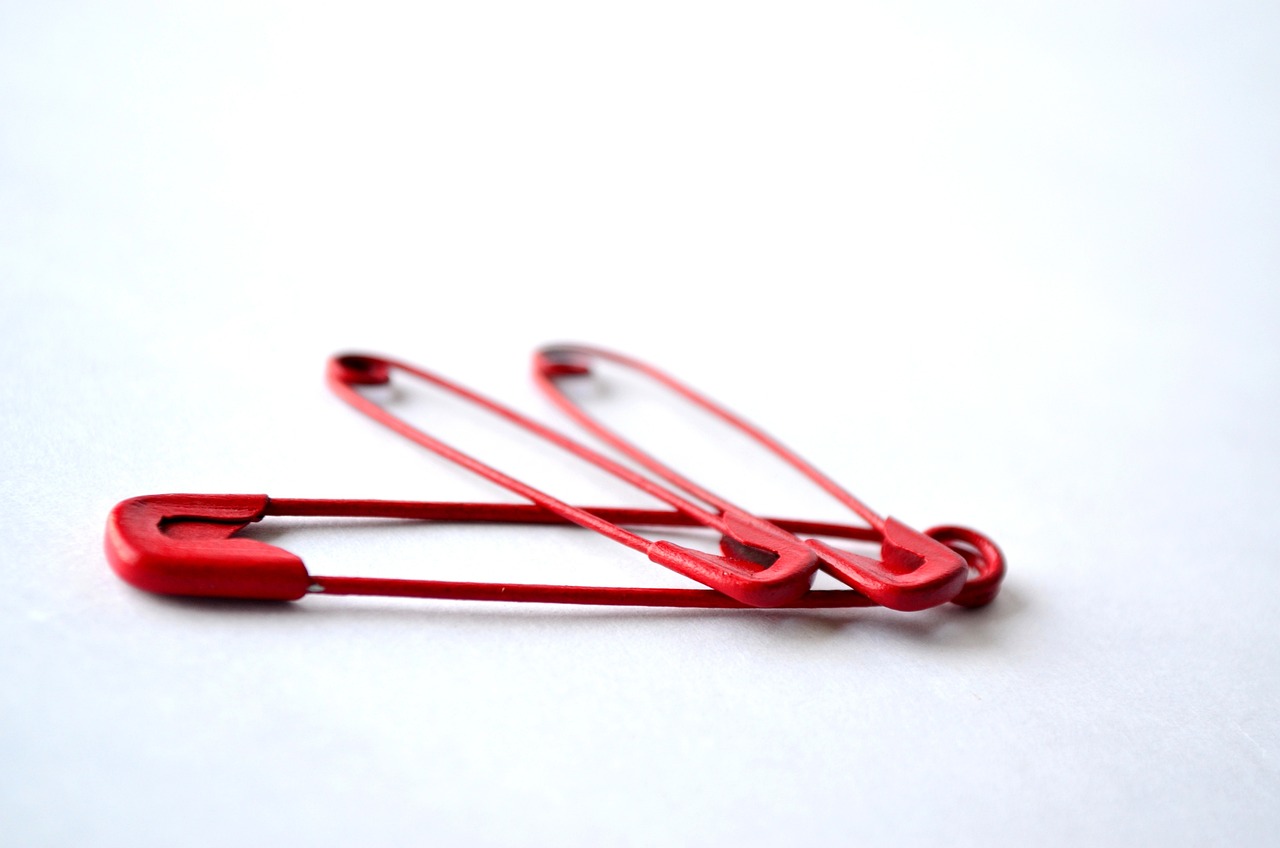
Encouraging Safe Play
When it comes to bunk beds, ensuring that children engage in safe play is crucial for preventing accidents and injuries. Kids are naturally energetic and curious, often turning their sleeping space into a playground. As parents, it’s our responsibility to guide them on how to enjoy their bunk bed while minimizing risks. One effective approach is to establish clear guidelines about what constitutes safe play. For instance, children should be reminded that the bunk bed is primarily for sleeping, not for jumping or roughhousing. You might say, “The top bunk is like a high diving board; it’s fun, but we need to be careful!”
Another important aspect is to create a designated play area away from the bunk bed. This not only helps in reducing the temptation to engage in unsafe activities on the bed but also allows children to express their creativity and energy in a safer environment. Consider setting up a cozy corner with cushions and toys where they can play freely. Encourage them to use the bunk bed for its intended purpose—sleeping, reading, or having quiet time—while promoting active play in designated areas.
Moreover, it’s essential to lead by example. Children often mimic adult behavior, so demonstrating safe practices yourself can have a significant impact. Show them how to climb up and down the ladder carefully and remind them to hold on securely. You might even create a fun game out of it, like timing them as they climb, but only when they follow the safety rules. This not only reinforces safe behavior but also makes it enjoyable!
To further encourage safe play, consider implementing the following tips:
- Supervision: Always keep an eye on your children when they are using the bunk bed, especially younger ones who may not fully understand the risks.
- Limit the Number of Users: Set a rule that only one child can be on the top bunk at a time to prevent falls.
- Age Appropriateness: Ensure that the children using the bunk bed are of an appropriate age and size for the bed.
By fostering a culture of safe play around the bunk bed, you not only protect your children but also help them develop a sense of responsibility and awareness regarding their surroundings. Remember, the goal is to create a fun and safe environment where they can enjoy their bunk bed without compromising their safety.
Q1: What age is appropriate for children to use a bunk bed?
A1: Most experts recommend that children under the age of six should not sleep on the top bunk due to the risk of falling. Always consider the child's maturity and ability to follow safety rules.
Q2: How can I ensure my bunk bed is safe?
A2: Regularly inspect the bunk bed for loose screws and wear, ensure it meets safety standards, and follow the manufacturer’s assembly instructions carefully.
Q3: What are some signs that my child is not using the bunk bed safely?
A3: Signs include climbing on the bed rails, jumping off the top bunk, or using the bunk bed for activities other than sleeping or reading. If you notice any of these behaviors, it may be time to reinforce safety rules.
Frequently Asked Questions
- What are the main safety risks associated with bunk beds?
Bunk beds come with unique safety challenges, primarily falls from the top bunk and improper usage. It's crucial for parents to be aware of these risks to create a safe sleeping environment for their children.
- How do I choose a safe bunk bed for my child?
Selecting a safe bunk bed involves considering the materials, design, and safety features. Look for sturdy construction, non-toxic finishes, and age-appropriate designs to minimize hazards.
- Are there specific materials I should look for in a bunk bed?
Yes! Parents should prioritize robust materials like solid wood or heavy-duty metal. It's also essential to ensure that the finishes are non-toxic to keep your child safe.
- What are the age and weight recommendations for bunk beds?
Most manufacturers provide age and weight guidelines to ensure safe usage. Always adhere to these recommendations to prevent accidents and injuries.
- How can I ensure proper installation of a bunk bed?
Follow the manufacturer's assembly instructions carefully. Use the right tools and secure all parts to ensure stability and safety. It’s worth taking the time to get it right!
- What routine maintenance should I perform on a bunk bed?
Regularly check for loose screws, damaged parts, or any signs of wear and tear. Conducting routine safety checks helps maintain the structural integrity of the bunk bed.
- How can I teach my children safe practices for using a bunk bed?
Establish clear rules about who can use the top bunk and how to climb safely. Educate them on safe play practices to minimize risks associated with jumping or roughhousing.
- Are there any safety certifications I should look for?
Yes, look for bunk beds that have safety certifications from recognized organizations. These certifications indicate that the bed has undergone rigorous testing for safety and stability.





